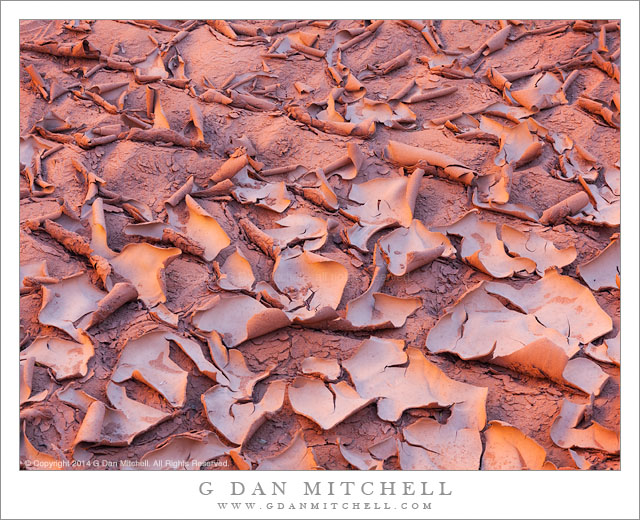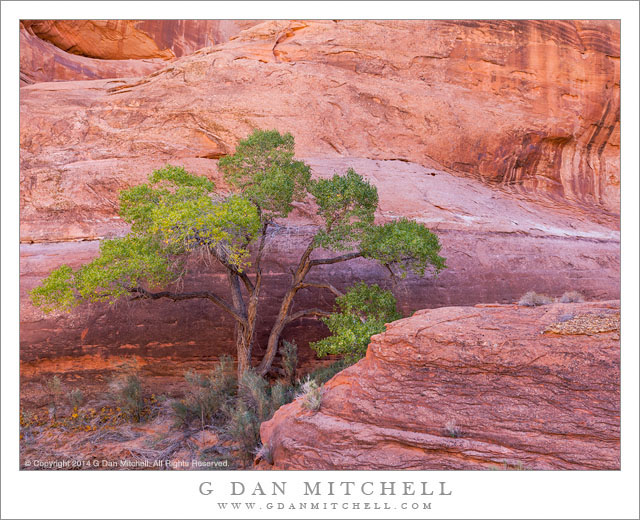
Autumn Morning, Fremont River Valley. Capitol Reef National Park, Utah. October 22, 2014. © Copyright 2014 G Dan Mitchell – all rights reserved.
Autumn morning light and clouds above the valley of the Fremont River
Technically this location is actually just outside of Capitol Reef National Park, but its close enough. The plan on this morning was to make a journey down the east side of the park to a somewhat more remote area, so we started out rather early. After passing through the park and starting the drive to our eventual destination we quickly realized that a fairly unusual and spectacular sunrise was underway, so we found the first available location from which to take advantage of the situation.
This was most definitely not a blah blue sky morning! A variety of clouds filled a good portion of the sky in several directions, though light was able to pass through gaps in the clouds to the east. Above the peaks of Capitol Reef to the west the sky was generally darkened by high clouds that briefly took on rosy dawn colors before fading. To the north were lenticular clouds, some lined up in formations that reminded me of California’s “Sierra wave” clouds. When I saw these clouds and this light, the obvious question was what to put in a photograph that included them — so I quickly wandered over the a high point above the valley of the Fremont River from which I could photograph across the sunlit valley to include the spectacular clouds and darker peaks in the distance.
 G Dan Mitchell is a California photographer and visual opportunist whose subjects include the Pacific coast, redwood forests, central California oak/grasslands, the Sierra Nevada, California deserts, urban landscapes, night photography, and more.
G Dan Mitchell is a California photographer and visual opportunist whose subjects include the Pacific coast, redwood forests, central California oak/grasslands, the Sierra Nevada, California deserts, urban landscapes, night photography, and more.
Blog | About | Flickr | Twitter | Facebook | Google+ | 500px.com | LinkedIn | Email
Text, photographs, and other media are © Copyright G Dan Mitchell (or others when indicated) and are not in the public domain and may not be used on websites, blogs, or in other media without advance permission from G Dan Mitchell.



